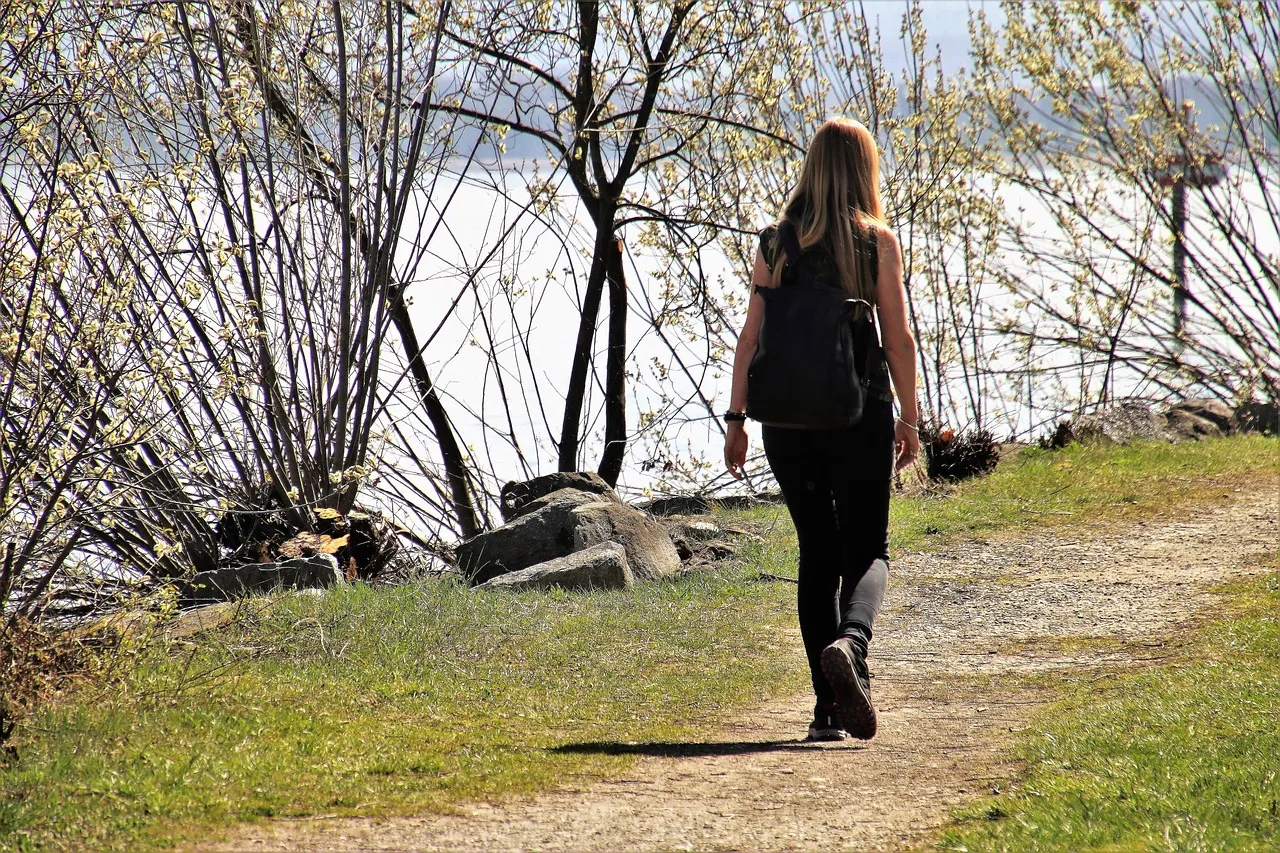Embarking on a journey that takes you from one continent to another is the epitome of adventure. Backpacking across continents transcends typical travel experiences, offering a unique blend of cultural immersion, self-discovery, and a constant thirst for exploration. In this guide, we unravel the allure of backpacking across continents, providing insights, tips, and inspiration for those seeking the ultimate adventure.
Backpacking Across Continents
The Allure of Backpacking Across Continents
Cultural Diversity at Every Step:
Backpacking across continents exposes you to a kaleidoscope of cultures, traditions, and languages. From the vibrant markets of Southeast Asia to the historic cities of Europe, each continent offers a tapestry of experiences that enrich your understanding of the world.
Epic Landscapes and Varied Terrain:
Continents vary dramatically in their landscapes, and backpacking allows you to witness this firsthand. From the snow-capped peaks of the Andes in South America to the vast deserts of Africa, the diversity of natural beauty is boundless.
Connecting with Local Communities:
Backpacking encourages a deeper connection with local communities. Whether it’s volunteering in a remote village, participating in cultural festivals, or staying with local families, this mode of travel fosters meaningful interactions and a greater appreciation for global interconnectedness.
Personal Growth and Self-Discovery:
The challenges of backpacking across continents foster personal growth and self-discovery. Navigating unfamiliar territories, overcoming language barriers, and adapting to diverse environments contribute to resilience, adaptability, and a heightened sense of self.
Essential Tips for Backpacking Across Continents
Thorough Planning and Research:
Extensive planning is crucial when backpacking across continents. Research visa requirements, health precautions, and cultural norms for each destination. Create a rough itinerary, but leave room for spontaneity and flexibility.
Invest in Quality Gear:
Your backpack is your constant companion, so invest in a durable and comfortable one. Quality gear, including a reliable tent, sleeping bag, and hiking shoes, ensures you’re well-equipped for a variety of environments and climates.
Pack Light and Smart:
Minimalist packing is key to successful backpacking. Prioritize versatile clothing, essential toiletries, and multipurpose gear. Aim for a balance between preparedness and mobility to make your journey more enjoyable.
Stay Connected but Disconnect:
Embrace the beauty of being disconnected while staying connected. While technology can assist in navigation and communication, allocate moments to disconnect and fully immerse yourself in the local environment without distractions.
Navigating Continents: Tips for Each Continent
Backpacking Across Europe:
Europe offers an extensive network of hostels, efficient public transportation, and a rich cultural tapestry. Explore iconic cities, traverse the picturesque landscapes of the Alps, and embrace the diversity of languages and cuisines.
Backpacking Across Asia:
Asia boasts a blend of ancient traditions and modern wonders. From the bustling markets of Bangkok to the serene landscapes of Bali, backpacking across Asia introduces you to spirituality, diverse cuisines, and a spectrum of cultural practices.
Backpacking Across Africa:
Africa’s vastness provides a playground for adventurous backpackers. Explore the Serengeti’s wildlife, trek through the Atlas Mountains, and immerse yourself in the vibrant cultures of countries like Morocco and Ghana.
Backpacking Across North America:
North America is a vast continent offering diverse experiences. From the wilderness of Alaska to the vibrant cities of the United States, backpacking across North America introduces you to varying landscapes, cultures, and climates.
Backpacking Across South America:
South America captivates with its natural wonders and cultural vibrancy. Trek to Machu Picchu in Peru, explore the Amazon Rainforest, and dance to the rhythms of Brazilian carnival – backpacking across South America is a sensory feast.
Budgeting for Backpacking Across Continents
Create a Flexible Budget:
Develop a comprehensive budget that considers transportation, accommodation, meals, and activities. However, remain flexible as unexpected expenses may arise.
Leverage Cost-Effective Accommodation:
Utilize budget-friendly accommodation options such as hostels, guesthouses, or camping sites. Booking in advance and exploring alternatives like homestays can contribute to significant savings.
Embrace Local Cuisine and Street Food:
Dining can be a major expense, but embracing local cuisine and street food allows you to experience the culture authentically while saving money. Seek out markets and eateries frequented by locals for authentic, affordable meals.
Optimize Transportation Costs:
Be strategic with transportation choices. Consider budget airlines, trains, and buses for intercontinental travel. In regions like Southeast Asia, backpacker-friendly transportation options, such as overnight buses, can offer both convenience and savings.
Staying Safe and Healthy
Prioritize Travel Insurance:
Invest in comprehensive travel insurance that covers medical emergencies, trip cancellations, and unexpected expenses. This is a crucial aspect of responsible backpacking across continents.
Stay Informed about Health Precautions:
Research health precautions and vaccination requirements for each destination. Carry a basic medical kit and medications, and stay informed about local healthcare facilities.
Practice Responsible Tourism:
Respect local customs, traditions, and the environment. Minimize your ecological footprint by practicing responsible tourism, such as disposing of waste properly and supporting sustainable initiatives.
Capturing and Sharing Your Journey
Document Your Adventures:
Document your journey through writing, photography, or video. Keep a travel journal to capture your thoughts and experiences, and share your journey with friends and family.
Connect with Fellow Travelers:
Backpacking across continents provides opportunities to connect with fellow travelers. Join online forums, attend local events, or stay in communal spaces like hostels to build connections and share insights.
Reflecting on the Journey:
Take Time for Reflection:
Periodically reflect on your journey. What have you learned? How have you grown? These moments of reflection add depth to your backpacking experience and contribute to a more meaningful adventure.
Embrace the Unpredictable:
Backpacking across continents is an adventure filled with surprises. Embrace the unpredictable nature of travel, be open to new experiences, and allow the journey to unfold organically.
Backpacking across continents is a transformative adventure that goes beyond sightseeing. It’s an exploration of cultures, landscapes, and, most importantly, oneself. By combining careful planning with an open mind and adventurous spirit, you can embark on a journey that transcends geographical boundaries, leaving you with a treasure trove of memories and a profound sense of the world’s diversity. So, pack your backpack, lace up your hiking boots, and set forth on the ultimate adventure of backpacking across continents.
Backpacking essentials checklist
Embarking on a backpacking adventure is a thrilling journey into the unknown, where each step leads to new discoveries. To ensure your expedition is smooth and enjoyable, meticulous preparation is key. In this comprehensive guide, we present the ultimate backpacking essentials checklist, covering everything you need to pack for a seamless and memorable adventure.
1. The Right Backpack
Your backpack is your home on the trail, so choosing the right one is paramount. Opt for a durable, well-fitted backpack with adjustable straps. Ensure it has sufficient capacity to carry your essentials without being overly burdensome.
2. Lightweight and Versatile Clothing
Pack lightweight, moisture-wicking clothing suitable for various climates. Include a mix of short and long-sleeved shirts, convertible pants, a waterproof jacket, and a warm layer. Choose quick-drying fabrics to adapt to changing weather conditions.
3. Comfortable Footwear
Invest in high-quality, comfortable hiking boots or shoes. Proper footwear is crucial for traversing diverse terrains comfortably. Break in your shoes before the trip to avoid blisters and discomfort on the trail.
4. Shelter – Tent and Sleeping Bag
A reliable tent and sleeping bag are essential for a good night’s sleep. Choose a lightweight, compact tent and a sleeping bag appropriate for the expected temperatures. Don’t forget a sleeping pad for added comfort and insulation.
5. Cooking and Eating Gear
Pack a compact stove, lightweight cookware, and utensils for preparing meals on the trail. Include a water purification system or water purification tablets to ensure a safe drinking supply. A multi-tool or camping knife can also be handy.
6. Navigation Tools
Carry a detailed map, a compass, and, if possible, a GPS device. Familiarize yourself with the route before embarking on the journey. Additionally, consider a solar-powered or battery-operated headlamp for navigating at night.
7. Adequate Hydration
Stay hydrated with a durable water bottle or hydration system. Research water availability along your route and plan accordingly. Consider a collapsible water reservoir for added capacity during long stretches without water sources.
8. Nutrition – Lightweight and Energy-Packed
Pack lightweight, energy-dense food items like trail mix, energy bars, and dehydrated meals. Ensure you have enough sustenance for the duration of your trip. Factor in extra snacks for an energy boost during strenuous hikes.
9. Adequate First Aid Kit
Prepare a compact first aid kit containing essentials like bandages, antiseptic wipes, pain relievers, blister treatment, and any personal medications. Customize the kit based on your medical needs and the nature of your adventure.
10. Clothing Accessories
Pack essential clothing accessories like a wide-brimmed hat, sunglasses, and a lightweight, quick-drying towel. Include gloves, a beanie, and extra socks for warmth in colder conditions.
11. Personal Hygiene Items
Maintain personal hygiene with travel-sized toiletries, including toothpaste, a toothbrush, biodegradable soap, and a small towel. Consider eco-friendly options to minimize environmental impact.
12. Lightweight Backpacking Gear
Opt for lightweight versions of essential gear, such as a compact camping stove, ultralight cookware, and a lightweight backpack. Minimizing weight is crucial for long-distance backpacking.
13. Weather-Appropriate Gear
Check the weather forecast for your destination and pack accordingly. Include rain gear, such as a waterproof jacket and pants, if rain is expected. Adjust your clothing and gear based on the anticipated climate.
14. Multipurpose Tools
Carry a versatile tool like a multi-tool or a Swiss Army knife. These tools come in handy for various tasks, from opening packages to repairing gear on the trail.
15. Emergency Essentials
Prepare for unforeseen circumstances with emergency essentials like a whistle, fire starter, and a compact emergency shelter. Ensure your first aid kit includes items for treating injuries or emergencies.
16. Communication Devices
Depending on the trail and location, consider carrying communication devices such as a satellite phone or a personal locator beacon (PLB). These devices can be essential in emergency situations.
17. Lightweight Electronics
Pack lightweight electronic devices like a compact camera, a portable charger, and a travel-friendly solar charger. Limit electronics to essentials and consider their weight and battery life.
18. Leave No Trace Gear
Practice responsible backpacking by carrying leave no trace gear. This includes a small trowel for digging cat holes, biodegradable soap, and reusable containers for waste disposal.
19. Personal Identification and Documents
Keep important documents secure in a waterproof container. Include your identification, passport, permits, and any reservations or contact information for emergency situations.
20. Comfort Items
While lightweight packing is essential, include comfort items like a small travel pillow or a compact camp chair if space allows. These items can enhance your overall well-being on the trail.
Final Tips for a Successful Backpacking Adventure
Test Your Gear:
Before setting out on your journey, test your gear, especially new additions, to ensure they meet your needs and function as expected.
Distribute Weight Wisely:
Distribute the weight in your backpack evenly to maintain balance and reduce strain on your back. Place heavier items closer to your back and towards the bottom.
Practice Leave No Trace Principles:
Adhere to leave no trace principles to minimize your environmental impact. Respect nature, follow established trails, and dispose of waste responsibly.
Stay Informed and Updated:
Stay informed about trail conditions, weather forecasts, and any regulations or permits required for your backpacking route. Check for updates before and during your journey.
Stay Flexible and Enjoy the Journey:
Embrace the unexpected and stay flexible. Backpacking is not just about the destination but the journey itself. Enjoy the landscapes, the challenges, and the moments of serenity on the trail.
By following this comprehensive backpacking essentials checklist, you’ll be well-prepared to embark on a transformative journey into the heart of nature. Whether you’re a seasoned backpacker or a first-time adventurer, careful preparation ensures you can fully savor the beauty and freedom of the great outdoors. So, pack your essentials, lace up your boots, and get ready for an adventure that promises discovery, resilience, and memories that last a lifetime.
Budget backpacking tips
Embarking on a budget backpacking adventure doesn’t mean sacrificing the thrill of exploration. With strategic planning and a sense of adventure, you can traverse the globe without breaking the bank. In this guide, we unveil practical budget backpacking tips that empower you to make the most of your journey while keeping your wallet intact.
1. Plan and Research Extensively
The foundation of successful budget backpacking lies in meticulous planning and thorough research. Explore budget-friendly destinations, accommodation options, and transportation choices. Utilize online resources, travel forums, and budget travel blogs to gather insights from fellow backpackers.
2. Travel During Off-Peak Seasons
Timing is everything when it comes to budget backpacking. Opt for off-peak seasons when accommodation prices are lower, and popular attractions are less crowded. This not only saves money but also allows you to enjoy a more authentic and relaxed experience at your destination.
3. Embrace Hostel Living
Hostels are the budget backpacker’s best friend. Choose hostels with positive reviews, communal spaces, and kitchen facilities. Not only do they offer affordable accommodation, but they also provide opportunities to meet fellow travelers, share tips, and form new friendships.
4. Cook Your Own Meals
Eating out every day can quickly deplete your budget. Save money by purchasing groceries from local markets and cooking your own meals. Hostel kitchens or communal cooking spaces in budget accommodations are ideal for preparing simple and cost-effective dishes.
5. Opt for Budget-Friendly Transportation
Choose budget-friendly transportation options such as buses, trains, or budget airlines. Research local transportation networks, and consider booking tickets in advance for additional savings. Embrace overnight journeys to save both time and accommodation costs.
6. Use Public Transportation
In many destinations, public transportation is not only cost-effective but also an authentic way to experience local life. Buses, trams, and metro systems are often more affordable than taxis and provide a chance to interact with locals.
7. Explore Free and Low-Cost Activities
Budget backpacking doesn’t mean missing out on incredible experiences. Seek out free or low-cost activities, such as exploring public parks, attending local festivals, or participating in walking tours. Many cities offer free museum days or discounted entry during specific hours.
8. Leverage Technology for Deals
Harness the power of technology to find the best deals. Use travel apps, websites, and price comparison tools to scout for affordable accommodation, transportation, and activities. Subscribe to newsletters for travel deals and flash sales.
9. Travel with a Reusable Water Bottle
Staying hydrated is crucial, and buying bottled water every day can add up. Carry a reusable water bottle and refill it at water stations or taps, reducing both costs and plastic waste.
10. Pack Light and Smart
Traveling with a lightweight backpack not only saves on airline baggage fees but also makes it easier to navigate public transportation and explore on foot. Pack versatile clothing and prioritize essentials to keep your backpack compact and manageable.
11. Stay Flexible with Accommodation
Maintain flexibility in your accommodation choices. Consider last-minute deals, negotiate prices, or explore alternatives like guesthouses, homestays, or budget-friendly hostels. Staying flexible allows you to adapt to changing circumstances and seize unexpected opportunities.
12. Take Advantage of Loyalty Programs
If you frequently travel with specific airlines or stay in certain hotel chains, enroll in their loyalty programs. Accumulate points or miles to earn discounts, free nights, or even complimentary upgrades on future travels.
13. Prioritize Free Walking Tours
Many cities offer free walking tours led by locals who provide insights into the city’s history, culture, and hidden gems. These tours are not only informative but also allow you to explore the city on foot, saving on transportation costs.
14. Consider Volunteer Opportunities
Combine travel with meaningful experiences by volunteering. Many organizations offer opportunities for budget backpackers to contribute their time and skills in exchange for accommodation and meals.
15. Monitor Your Daily Expenses
Keep a close eye on your daily expenses to stay within your budget. Use budgeting apps or keep a travel journal to track expenditures. Being mindful of your spending helps you identify areas where you can cut costs.
16. Be Open to Couchsurfing
Couchsurfing is a platform that connects travelers with locals willing to offer free accommodation. It’s a fantastic way to experience local hospitality, gain insider insights, and forge connections with residents.
17. Negotiate Prices
In certain regions, bargaining or negotiating prices is a common practice. Whether it’s for souvenirs, transportation, or accommodation, don’t hesitate to negotiate for a better deal. Politeness is key in these interactions.
18. Use Local SIM Cards
Avoid hefty roaming charges by using local SIM cards for your phone. This allows you to stay connected at local rates, making it easier to navigate, access information, and communicate without breaking the bank.
19. Consider Overland Travel
For budget backpacking across regions or continents, consider overland travel options such as buses or trains. These modes of transportation provide a cost-effective means of covering long distances while enjoying scenic views.
20. Stay Open-Minded and Embrace Spontaneity
Finally, the essence of budget backpacking lies in staying open-minded and embracing spontaneity. Be open to new experiences, meet fellow travelers, and seize opportunities as they arise. Some of the most memorable moments happen when you least expect them.
Budget backpacking is not just a way to save money; it’s a mindset that encourages resourcefulness, adaptability, and a deeper connection with the places you visit. By incorporating these budget backpacking tips into your travel strategy, you can embark on a thrifty adventure that expands your horizons, fuels your sense of wanderlust, and proves that the most remarkable journeys need not come with a hefty price tag. So, pack your backpack, tighten your shoelaces, and get ready for a budget-friendly adventure of a lifetime!
Long-term travel planning
Embarking on a long-term travel adventure is a dream many share, and with careful planning, it’s a dream that can become a reality. In this guide, we unveil the secrets of successful long-term travel planning, offering insights, tips, and a roadmap for those ready to embrace the liberating journey of a lifetime.
1. Define Your Travel Goals
The first step in long-term travel planning is defining your travel goals. What do you want to achieve? Is it cultural immersion, personal growth, or a combination of both? Identifying your objectives helps shape your itinerary and provides clarity for the entire planning process.
2. Establish a Realistic Budget
Budgeting is the backbone of successful long-term travel. Assess your financial situation, determine how much you can allocate to your journey, and create a realistic budget. Consider accommodation, transportation, meals, activities, and unforeseen expenses. Allow flexibility within your budget to adapt to changes on the road.
3. Choose Your Destinations Wisely
Selecting destinations for a long-term trip requires thoughtful consideration. Consider factors such as cost of living, visa requirements, safety, and your personal interests. Create a diverse itinerary that balances iconic destinations with off-the-beaten-path gems, ensuring a rich and varied experience.
4. Plan a Rough Itinerary
While spontaneity is a crucial aspect of long-term travel, having a rough itinerary provides structure and helps with budgeting. Plan your route, including major stops and potential timelines. Be open to changes, but having a baseline itinerary aids in estimating costs and staying organized.
5. Research Visa Requirements
Visa regulations vary widely across countries, and understanding these requirements is vital for a seamless journey. Research visa policies for each destination on your itinerary, and plan accordingly. Some countries offer long-term visas or work permits for travelers interested in more extended stays.
6. Consider Accommodation Options
Long-term travel necessitates diverse accommodation strategies. Explore a mix of options, including budget hostels, guesthouses, vacation rentals, and potentially house-sitting opportunities. Utilize online platforms and booking sites to secure affordable and comfortable places to stay.
7. Pack Light and Smart
Packing efficiently is a skill that can significantly enhance your long-term travel experience. Pack versatile clothing suitable for various climates, and prioritize essentials over non-essentials. Invest in lightweight, durable gear, and remember that you can purchase necessities on the road.
8. Manage Health and Insurance
Prioritize your health by securing comprehensive travel insurance. Ensure coverage for medical emergencies, trip cancellations, and potential disruptions. Visit a travel clinic for vaccinations and health advice specific to the regions you plan to explore.
9. Plan for Transportation
Consider your transportation options for both short and long distances. Research budget-friendly airlines, explore train and bus routes, and, if possible, incorporate overland travel for a more immersive experience. Leverage travel apps and booking platforms to find the best deals.
10. Create a Financial Safety Net
Long-term travel is an investment, and having a financial safety net is crucial. Set aside funds for emergencies or unexpected expenses. Establish a method for accessing money abroad, such as a combination of cash, credit cards, and local currency.
11. Embrace Slow Travel
One of the joys of long-term travel is the ability to embrace slow travel. Rather than rushing from one destination to another, allow yourself the luxury of spending more time in each place. This not only deepens your connection with local cultures but also minimizes travel fatigue.
12. Stay Connected
Maintaining communication with loved ones is essential during long-term travel. Ensure you have a reliable communication plan, such as a local SIM card, international phone plan, or messaging apps with internet connectivity. Regular check-ins provide peace of mind for both you and your loved ones.
13. Learn Basic Local Phrases
Learning basic phrases in the local language enhances your travel experience. Locals appreciate the effort, and it fosters meaningful connections. Invest time in mastering common greetings, expressions, and polite phrases relevant to the regions you’ll be visiting.
14. Stay Healthy on the Road
Maintaining good health is crucial for a successful long-term journey. Prioritize healthy habits, stay hydrated, and be mindful of your physical and mental well-being. Research local healthcare facilities in advance, and carry a basic medical kit with essential medications.
15. Adapt to Local Cultures
Cultural sensitivity is a key aspect of successful long-term travel. Be open-minded, adapt to local customs, and show respect for the cultures you encounter. Immerse yourself in local traditions, attend cultural events, and engage with the community to gain a deeper understanding of your surroundings.
16. Work or Volunteer Opportunities
For those interested in extending their journey or immersing themselves in a destination, explore work or volunteer opportunities. Many countries offer programs that allow travelers to exchange skills or services for accommodation and meals.
17. Stay Mindful of Environmental Impact
Responsible travel is vital for preserving the beauty of the destinations you visit. Minimize your environmental impact by reducing waste, supporting eco-friendly initiatives, and respecting local ecosystems. Leave no trace and be a responsible steward of the places you explore.
18. Connect with Fellow Travelers
Building connections with fellow travelers enhances the social aspect of long-term travel. Join online forums, attend meet-ups, and participate in communal activities. These connections can lead to shared experiences, valuable advice, and lasting friendships.
19. Budget for Leisure and Entertainment
Allocate a portion of your budget for leisure and entertainment. Whether it’s attending local performances, exploring museums, or trying unique activities, budgeting for leisure ensures you enjoy the cultural richness of each destination.
20. Be Open to Change and Adaptation
Long-term travel is an ever-evolving journey, and flexibility is key. Embrace unexpected detours, adapt to changing circumstances, and allow the journey to unfold organically. Sometimes, the most memorable experiences arise from unplanned moments.
In conclusion, long-term travel planning is a meticulous process that blends preparation with the excitement of the unknown. By incorporating these tips into your long-term travel strategy, you can embark on a journey that transcends traditional tourism. Immerse yourself in the richness of diverse cultures, savor the freedom of the open road, and let the world become your classroom as you embark on the transformative adventure of long-term travel.
Backpacking routes and itineraries
Embarking on a backpacking journey is an exhilarating way to explore the world. Whether you’re drawn to the scenic beauty of mountains, the cultural tapestry of cities, or the tranquility of remote landscapes, backpacking routes offer a gateway to diverse experiences. In this guide, we unveil some of the most captivating backpacking routes and itineraries that promise adventure, cultural immersion, and unforgettable moments.
1. The Inca Trail, Peru: A Journey to Machu Picchu
Overview:
The Inca Trail in Peru is an iconic trek leading to the ancient city of Machu Picchu. This legendary route winds through breathtaking Andean landscapes, encompassing mountain passes, cloud forests, and ancient Incan ruins.
Itinerary:
- Day 1: Start the trek from Kilometer 82, passing through the Sacred Valley.
- Day 2: Tackle the challenging ascent to Dead Woman’s Pass, the highest point of the trail.
- Day 3: Explore the archaeological site of Winay Wayna before reaching the Sun Gate and catching the first glimpse of Machu Picchu.
- Day 4: Witness the sunrise over Machu Picchu and explore the ancient city.
2. The Appalachian Trail, USA: Wilderness and Solitude
Overview:
The Appalachian Trail (AT) is a legendary long-distance trail in the Eastern United States, stretching over 2,190 miles. This epic journey traverses diverse landscapes, from wooded valleys to alpine peaks.
Itinerary:
- Begin at Springer Mountain, Georgia.
- Hike through picturesque sections like the Great Smoky Mountains, Shenandoah National Park, and the White Mountains.
- Experience the camaraderie of trail communities and shelters.
- Conclude at Mount Katahdin, Maine.
3. The Haute Route, France and Switzerland: Alpine Splendor
Overview:
The Haute Route is a classic high-mountain trek that connects the French and Swiss Alps. This challenging but rewarding journey treats hikers to stunning alpine scenery, charming villages, and iconic mountain passes.
Itinerary:
- Start in Chamonix, France, and traverse through the Mont Blanc Massif.
- Cross into Switzerland, passing through picturesque valleys and alpine lakes.
- Conclude in the charming village of Zermatt, with views of the Matterhorn.
4. The Pacific Crest Trail, USA: West Coast Wonders
Overview:
Stretching from the Mexican border to the Canadian border, the Pacific Crest Trail (PCT) offers a diverse array of landscapes. This long-distance trail takes hikers through the deserts of Southern California, the majestic Sierra Nevada, and the lush forests of the Pacific Northwest.
Itinerary:
- Begin at the Southern Terminus at the Mexican border.
- Trek through iconic sections like the Mojave Desert, the High Sierra, and the Cascade Range.
- Conclude at Manning Park, British Columbia, Canada.
5. The Everest Base Camp Trek, Nepal: Himalayan Heights
Overview:
For those seeking a blend of cultural exploration and high-altitude adventure, the Everest Base Camp Trek in Nepal is an unparalleled experience. The trek offers stunning views of the world’s highest peaks, including Mount Everest.
Itinerary:
- Start in Lukla and trek through the Khumbu region.
- Visit traditional Sherpa villages and monasteries.
- Reach Everest Base Camp and witness breathtaking views of Everest.
- Optionally, ascend Kala Patthar for panoramic views.
6. The Camino de Santiago, Spain: Pilgrimage and Reflection
Overview:
The Camino de Santiago, also known as the Way of St. James, is a network of pilgrimage routes leading to the Santiago de Compostela Cathedral in Spain. It’s not just a physical journey but a spiritual and cultural experience.
Itinerary:
- Choose a route, with the Camino Frances being the most popular.
- Pass through charming villages, historic landmarks, and picturesque landscapes.
- Conclude at Santiago de Compostela, where pilgrims receive a certificate of completion.
7. The Annapurna Circuit, Nepal: Himalayan Circuit
Overview:
The Annapurna Circuit is a classic trek that encircles the Annapurna Massif in Nepal. This route combines diverse landscapes, from lush subtropical forests to high-altitude desert terrain.
Itinerary:
- Begin in Besisahar and trek through culturally rich villages.
- Traverse the Thorong La Pass, the highest point of the circuit.
- Descend into the Mustang region and witness unique landscapes.
- Conclude in Pokhara, surrounded by stunning lakes and mountains.
8. The West Highland Way, Scotland: Lochs and Highlands
Overview:
The West Highland Way is Scotland’s premier long-distance trail, winding its way through the breathtaking landscapes of the Scottish Highlands. It offers a perfect blend of scenic beauty, cultural exploration, and historic sites.
Itinerary:
- Start in Milngavie, near Glasgow.
- Hike through the remote Rannoch Moor and the atmospheric Glencoe.
- Conclude at Fort William, situated at the base of Ben Nevis, the UK’s highest peak.
9. The Great Ocean Walk, Australia: Coastal Beauty
Overview:
For those drawn to coastal landscapes, the Great Ocean Walk in Australia is a spectacular choice. This trail follows the rugged coastline of Victoria, offering stunning views of the Southern Ocean and iconic rock formations.
Itinerary:
- Begin at Apollo Bay and traverse through the Great Otway National Park.
- Enjoy breathtaking coastal views and the famous Twelve Apostles.
- Conclude at the historic fishing village of Port Campbell.
10. The Te Araroa Trail, New Zealand: From Cape Reinga to Bluff
Overview:
Te Araroa is a long-distance trail that spans the entirety of New Zealand, showcasing the country’s diverse landscapes, from beaches to mountains. It’s a journey that captures the essence of Aotearoa.
Itinerary:
- Start at Cape Reinga in the North Island.
- Trek through native forests, volcanic landscapes, and alpine regions.
- Cross the Cook Strait and explore the South Island.
- Conclude at Bluff, at the southern tip of New Zealand.
Embarking on a backpacking adventure along these diverse routes offers a profound opportunity for self-discovery, cultural exploration, and connection with the natural world. Whether you’re seeking the challenge of high-altitude treks or the serenity of coastal paths, these backpacking routes and itineraries cater to a variety of preferences, ensuring a transformative journey for every avid traveler. So, lace up your hiking boots, pack your backpack, and let the adventure begin!
Solo backpacking safety tips
Embarking on a solo backpacking journey is a thrilling and empowering experience, allowing you to chart your own course and immerse yourself in the world with unparalleled freedom. While the allure of solo travel is undeniable, ensuring your safety is paramount. In this comprehensive guide, we’ll explore essential solo backpacking safety tips to empower you on your solo adventures.
1. Research Your Destination Thoroughly
Before setting foot in a new destination, conduct thorough research. Understand the local customs, cultural norms, and any potential safety concerns. Know the political climate, weather conditions, and any specific challenges that solo travelers might face in that area.
2. Share Your Itinerary
Keep someone informed about your travel plans. Share your detailed itinerary, including accommodation details, transportation schedules, and planned activities, with a trusted friend or family member. Regularly check in with them to provide updates on your whereabouts.
3. Choose Reputable Accommodations
Opt for accommodations with positive reviews and solid reputations. Research hostels, guesthouses, or hotels with a focus on safety and security. Check online forums and travel communities for recommendations from fellow solo travelers.
4. Stay Connected
Ensure you have reliable communication tools. Purchase a local SIM card or an international phone plan to stay connected. Additionally, carry a portable charger to keep your devices powered, especially when venturing into remote areas.
5. Trust Your Instincts
Your instincts are powerful allies. If a situation feels uncomfortable or unsafe, trust your gut feelings and take appropriate action. Whether it’s changing your route, avoiding certain areas, or seeking help, prioritize your intuition.
6. Be Mindful of Valuables
Minimize the risk of theft by keeping your valuables secure. Invest in a quality travel lock for your backpack, use a money belt for important documents and cash, and consider carrying a decoy wallet with a small amount of money to hand over in case of a mugging.
7. Learn Basic Local Phrases
Learning a few essential phrases in the local language not only facilitates communication but also endears you to locals. Phrases like “hello,” “thank you,” and “help” can be invaluable in navigating unfamiliar territories.
8. Stay Informed About Local Scams
Familiarize yourself with common scams in the area you’re visiting. Awareness is your best defense against scams, and being informed allows you to recognize and avoid potential pitfalls.
9. Keep Emergency Contacts Handy
Save local emergency contacts, including the nearest embassy or consulate, in your phone. Additionally, have a list of important contacts, such as emergency services and your country’s embassy, stored in both your phone and a physical notebook.
10. Have a Health and Safety Kit
Pack a compact health and safety kit with essentials like basic first aid supplies, any necessary medications, and personal hygiene items. Include items such as insect repellent, sunscreen, and a small flashlight.
11. Stay Sober and Aware
While it’s tempting to indulge in local beverages and nightlife, it’s crucial to stay aware of your surroundings. Avoid excessive alcohol consumption, especially in unfamiliar settings, and remain vigilant to ensure your safety.
12. Stay in Public Places at Night
When exploring after dark, stick to well-lit and populated areas. Avoid isolated or poorly lit areas, and be cautious of your surroundings. Trust your instincts, and if something feels off, head to a more secure location.
13. Keep Digital Copies of Important Documents
Scan and store digital copies of your passport, visa, travel insurance, and other important documents. Email them to yourself or store them securely in a cloud-based service. This ensures you can access them even if physical copies are lost or stolen.
14. Be Wary of Over-sharing on Social Media
While it’s tempting to share your adventures on social media, be cautious about over-sharing real-time information. Broadcasting your exact location can compromise your safety. Share updates selectively and consider posting after you’ve left a particular location.
15. Stay Informed About Local Laws
Research and familiarize yourself with local laws and customs. Certain behaviors that are acceptable in one culture may be frowned upon or even illegal in another. Being aware of and respecting local regulations contributes to a smoother and safer journey.
16. Join Group Tours or Activities
Participating in group tours or activities provides an opportunity to explore with a sense of community and shared experiences. This not only enhances your travel experience but also adds an extra layer of safety, especially in less familiar environments.
17. Practice Self-Defense Awareness
While the likelihood of needing self-defense skills is low, having a basic understanding of self-defense techniques can boost your confidence. Consider taking a self-defense class before your journey to feel more prepared.
18. Regularly Update Someone on Your Whereabouts
Maintain consistent communication with someone back home or a fellow traveler. Share your daily plans and updates, especially if you deviate from your original itinerary. This ongoing communication serves as a safety net.
19. Utilize Safe Transportation Options
Prioritize reputable and safe transportation options. Use licensed taxis, rideshare services, or public transportation with positive reviews. Avoid hitchhiking and, if necessary, share your travel plans with someone before accepting rides.
20. Stay Flexible and Adapt
Flexibility is a key component of solo travel. Be open to changes in your plans, unexpected opportunities, and the occasional detour. Staying adaptable enhances your ability to navigate unforeseen circumstances.
Solo backpacking is a transformative adventure that offers unparalleled freedom and self-discovery. By integrating these safety tips into your travel strategy, you’ll be better equipped to navigate the challenges and revel in the joys of solo exploration. So, lace up your hiking boots, pack your backpack, and venture into the world with confidence, knowing that your safety is a top priority on your fearless journey.






